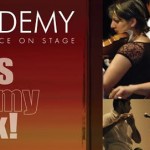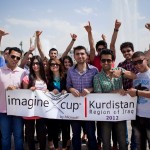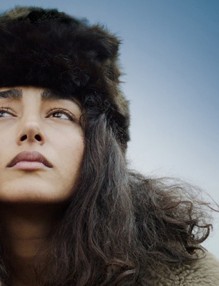
ERBIL, May 5 – One of the first photography exhibitions to be shown in Erbil’s Citadel will put a spotlight on social and political conflicts around the world, including the plight of minorities living in Kurdistan Region.
Andy Spyra, from Hagen in Germany, spent three years documenting social and political conflicts all over the world: the Kashmir conflict (which won him third place in the Pictures of the Year International competition), the aftermath of the Bosnian genocide, Ethiopia, Turkey and Christian living in Iraqi-Kurdistan.
Now, thanks to the Goethe (German) Institute, Spyra’s photographs will be shown in the Old Hamam of the Citadel, at 5pm today, and for the next two days.
The 28-year-old photojournalist, who has also received grants from Getty and Sony World Photography for his work, focuses on the psychological impact of conflicts rather than the actual events, to produce visceral black-and-white images for his ‘Faultlines’ exhibit.
He said: “Instead of showing what’s happening on the ground,I ask, how does it feel on the ground? How does conflict affect people and the individual? What are the repercussions after war – how does it change your life and how do you deal with it?”
As a freelancer on assignment for a German magazine, Spyra spent ten days reporting on the life of Christians in Qaraqosh, 30km from Mosul.
The Assyrian population of the town, also known Akhidad or Baghdeda, has been subject to violence and intimidation from Islamic fundamentalists since the beginning of the Iraq war.
In addition to church bombings and attacks, extremists have also enforced rules such as banning alcohol and hijabs for women.
“What really struck me was how these people clung to their faith, how important and strong their faith was and so incorporated into their identity.
“In contrast to western Europe, where faith is a very private concept, faith in the Middle-East and, in particular, Iraq, is everything to you.”
Aside from his photos of Assyrians Christians, taken last year, Sprya feels that all Kurdish people can relate to the show today: “Many of the images I will show from Bosnia and Kashmir will look very familiar too Kurds who have been involved in a similar story.”
Spyra, who first came to Kurdistan in 2007, has become invested in the region. “When the border opened I came to take a look, I had no clear idea of what I was doing,” he said.
 After working in northern Iraqi-Kurdistan, and teaching a photography workshop for Iraqis at the Goethe Institute last December, Spyra said “now coming back, the people and region, it’s all in my heart.”
After working in northern Iraqi-Kurdistan, and teaching a photography workshop for Iraqis at the Goethe Institute last December, Spyra said “now coming back, the people and region, it’s all in my heart.”
The regional government evacuated virtually all of the citadel residents in 2006 as part of a plan to restore and turn the more than 6,000-year-old archaeological treasure into a hub for tourism and culture.
“I think it’s important to bring foreign workers to Kurdistan and participate, in the emergence and the enrichment of culture in Kurdistan,” said Spyra.
By Shyamalie Satkunanandan (AKNews)

Previous:
Just say YES – Youth Excellence on Stage Academy shapes up for 2012 performing arts program

Next:
Imagine Cup Kurdistan 2012
You may also like
-
 02 Aug
02 AugInternational Youth Day: A Force for Positive Social Change August 13
Art & Culture The American Corner Erbil will hold the International Youth Day 2017 on August 13 at ... -
 02 Dec
02 DecGET GIFTS FROM FAMILY MALL SANTAS
Art & Culture Family Mall has been giving away thousands of valuable gifts on a daily basis from ... -
 24 Oct
24 OctWorld Day for Audiovisual Heritage at Institut Français 27 October
Art & Culture The Institut Français in Erbil is hosting the World Day for Audiovisual Heritage, featuring the film ... -
 05 Aug
05 AugErbil Startup Weekend 22-24 August
Art & Culture Startup Weekend is a global network of passionate leaders and entrepreneurs on a mission to ...

